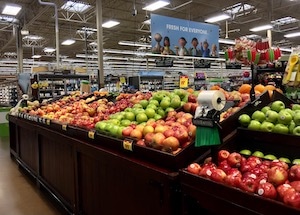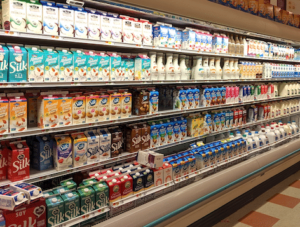
Where’s the Food?
From ice cream to apples, food shortages are not the problem. We have food but transporting it from one place to another — within a state, the United States or across the waters — is the issue. Food and supplies that are exported and imported are packed ready to go but as headlines note, sitting in containers outside of ports. One food industry colleague mentioned that shipping apple juice from the state of Washington to Arkansas became a nightmare for the processor as no trucks existed to transport the product. As some may have witnessed, basic goods at U.S. grocery stores are once again showing availability similar to the early COVID months in 2020. With anticipated shortages lasting into 2022, food suppliers are stocking a four-to-six-month supply of items when possible.2

The Pocketbook Reality
Whether it’s “sticker shock” or the streaming of headlines, prices are going up and not just in the grocery store. A report from CoBank published earlier in October shows that supply disruptions along with labor shortages are adding significant costs to supply chain inputs costing farmers and processors more to produce food.3 While only a small percentage of the supply chain costs have been passed along to customers, it is anticipated that more increases will occur now through the beginning of 2022. With the increase cost of inputs along the supply chain comes higher food prices. Whether its major food companies, like ConAgra and PepsiCo, or local food purveyors, increased prices are inevitable.

The Essential Worker is Essential
In the midst of the pandemic, the recognition of how many hands are required to get food on our table suddenly became a reality. From the produce fields to food processing plants, to front line grocery and restaurant workers, everyone is essential. However, the reality is even more evident today with labor shortages contributing to the mentioned supply chain issues. Why? As one colleague described it, “workers are just tired.” For some, working in the trenches for 25 plus years and maintaining production throughout the pandemic’s challenges, has finally been a reason to call it quits. Additionally, more women have left the workforce due to childcare issues, and replacements are not easy to find. As consumers have returned to restaurants, workers have not always followed suit or quit when the impatient customer outweighs job security.
Time for Reset
Let’s face it — regardless of our age and where we live or work, we have felt the effects of the global pandemic. For some of us it’s been an inconvenience. For others it has meant drastic loss. We want things to be “normal” but whatever “normal” was, it is now gone. Food prices across the globe will increase and with it, more of us will need help while others will only complain. We are not the only generation to feel shortages, nor will we be the last. Some of us remember the gasoline shortages in the 1970s or our parents’ stories about food rationing in the 1940s. Supply chain normalcy is predicted to return over the coming months but our outcome will depend on how we reset our expectations. Opinion pieces are questioning if the real outcome of this pandemic is not the reshaping of the supply chain, but of our attitudes and how we wish to live. Maybe it is time to reset our expectations. Let’s be realistic, resilient and respectful of those around us … especially those who ensure we have food on the table.
References
1. “Don’t rant about short-staffed stores and supply chain woes,” by Micheline Maynard, Washington Post, October 18, 2021.
2. “5@5: Jobless claims hit pandemic low | Plastic industry will pollute more than coal,” New Hope Network, October 21, 2021.
3. “Supply Disruptions Add Costs: Bottlenecks Loom for Critical Ag Supplies,” DTN/The Progressive Farmer, October 11, 2021.
